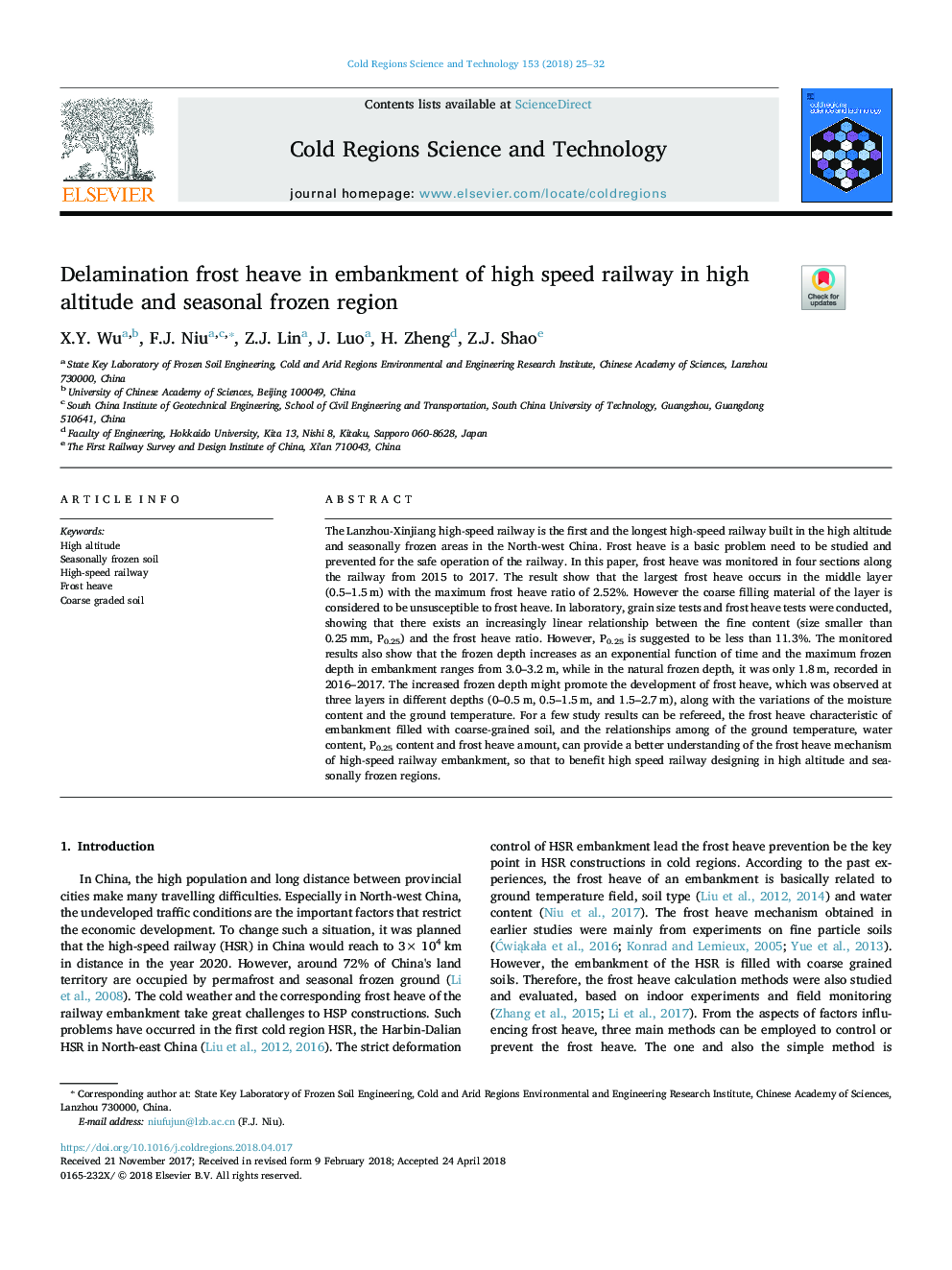| Article ID | Journal | Published Year | Pages | File Type |
|---|---|---|---|---|
| 8906406 | Cold Regions Science and Technology | 2018 | 8 Pages |
Abstract
The Lanzhou-Xinjiang high-speed railway is the first and the longest high-speed railway built in the high altitude and seasonally frozen areas in the North-west China. Frost heave is a basic problem need to be studied and prevented for the safe operation of the railway. In this paper, frost heave was monitored in four sections along the railway from 2015 to 2017. The result show that the largest frost heave occurs in the middle layer (0.5-1.5â¯m) with the maximum frost heave ratio of 2.52%. However the coarse filling material of the layer is considered to be unsusceptible to frost heave. In laboratory, grain size tests and frost heave tests were conducted, showing that there exists an increasingly linear relationship between the fine content (size smaller than 0.25â¯mm, P0.25) and the frost heave ratio. However, P0.25 is suggested to be less than 11.3%. The monitored results also show that the frozen depth increases as an exponential function of time and the maximum frozen depth in embankment ranges from 3.0-3.2â¯m, while in the natural frozen depth, it was only 1.8â¯m, recorded in 2016-2017. The increased frozen depth might promote the development of frost heave, which was observed at three layers in different depths (0-0.5â¯m, 0.5-1.5â¯m, and 1.5-2.7â¯m), along with the variations of the moisture content and the ground temperature. For a few study results can be refereed, the frost heave characteristic of embankment filled with coarse-grained soil, and the relationships among of the ground temperature, water content, P0.25 content and frost heave amount, can provide a better understanding of the frost heave mechanism of high-speed railway embankment, so that to benefit high speed railway designing in high altitude and seasonally frozen regions.
Related Topics
Physical Sciences and Engineering
Earth and Planetary Sciences
Earth and Planetary Sciences (General)
Authors
X.Y. Wu, F.J. Niu, Z.J. Lin, J. Luo, H. Zheng, Z.J. Shao,
